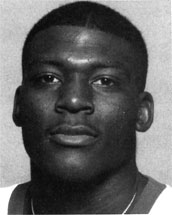save the cavendish...
i wish i could have tried a big mike, but i do find the cavendish quite delish.

The Cavendish—as the slogan of Chiquita, the globe’s largest banana producer, declares—is “quite possibly the world’s perfect food.” Bananas are nutritious and convenient; they’re cheap and consistently available. Americans eat more bananas than any other kind of fresh fruit, averaging about 26.2 pounds of them per year, per person (apples are a distant second, at 16.7 pounds). It also turns out that the 100 billion Cavendish bananas consumed annually worldwide are perfect from a genetic standpoint, every single one a duplicate of every other. It doesn’t matter if it comes from Honduras or Thailand, Jamaica or the Canary Islands—each Cavendish is an identical twin to one first found in Southeast Asia, brought to a Caribbean botanic garden in the early part of the 20th century, and put into commercial production about 50 years ago.
That sameness is the banana’s paradox. After 15,000 years of human cultivation, the banana is too perfect, lacking the genetic diversity that is key to species health. What can ail one banana can ail all. A fungus or bacterial disease that infects one plantation could march around the globe and destroy millions of bunches, leaving supermarket shelves empty.
A wild scenario? Not when you consider that there’s already been one banana apocalypse. Until the early 1960s, American cereal bowls and ice cream dishes were filled with the Gros Michel, a banana that was larger and, by all accounts, tastier than the fruit we now eat. Like the Cavendish, the Gros Michel, or “Big Mike,” accounted for nearly all the sales of sweet bananas in the Americas and Europe. But starting in the early part of the last century, a fungus called Panama disease began infecting the Big Mike harvest. The malady, which attacks the leaves, is in the same category as Dutch Elm disease. It appeared first in Suriname, then plowed through the Car- ibbean, finally reaching Honduras in the 1920s. (The country was then the world’s largest banana producer; today it ranks third, behind Ecuador and Costa Rica.)

The Cavendish—as the slogan of Chiquita, the globe’s largest banana producer, declares—is “quite possibly the world’s perfect food.” Bananas are nutritious and convenient; they’re cheap and consistently available. Americans eat more bananas than any other kind of fresh fruit, averaging about 26.2 pounds of them per year, per person (apples are a distant second, at 16.7 pounds). It also turns out that the 100 billion Cavendish bananas consumed annually worldwide are perfect from a genetic standpoint, every single one a duplicate of every other. It doesn’t matter if it comes from Honduras or Thailand, Jamaica or the Canary Islands—each Cavendish is an identical twin to one first found in Southeast Asia, brought to a Caribbean botanic garden in the early part of the 20th century, and put into commercial production about 50 years ago.
That sameness is the banana’s paradox. After 15,000 years of human cultivation, the banana is too perfect, lacking the genetic diversity that is key to species health. What can ail one banana can ail all. A fungus or bacterial disease that infects one plantation could march around the globe and destroy millions of bunches, leaving supermarket shelves empty.
A wild scenario? Not when you consider that there’s already been one banana apocalypse. Until the early 1960s, American cereal bowls and ice cream dishes were filled with the Gros Michel, a banana that was larger and, by all accounts, tastier than the fruit we now eat. Like the Cavendish, the Gros Michel, or “Big Mike,” accounted for nearly all the sales of sweet bananas in the Americas and Europe. But starting in the early part of the last century, a fungus called Panama disease began infecting the Big Mike harvest. The malady, which attacks the leaves, is in the same category as Dutch Elm disease. It appeared first in Suriname, then plowed through the Car- ibbean, finally reaching Honduras in the 1920s. (The country was then the world’s largest banana producer; today it ranks third, behind Ecuador and Costa Rica.)


1 Comments:
A banana named "Big Mike" is ripe for dirty jokes.
I'm a fan of nanners but a little birdie hates them! She spells banana E-V-I-L.
Post a Comment
Subscribe to Post Comments [Atom]
<< Home